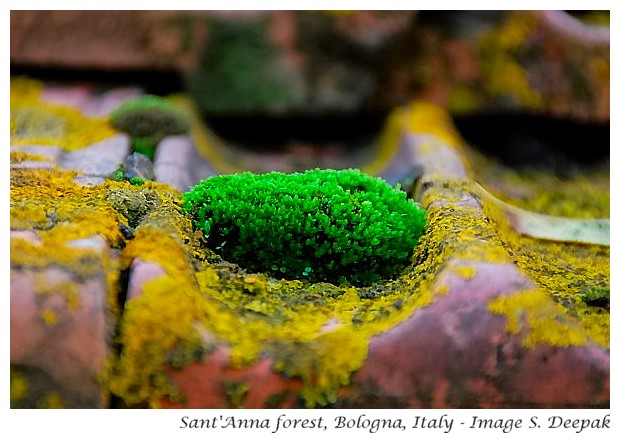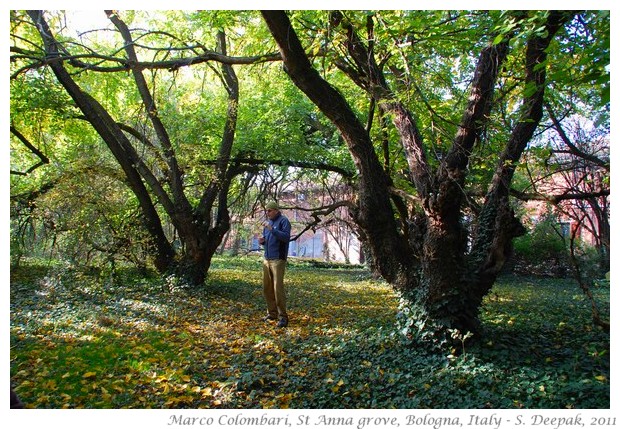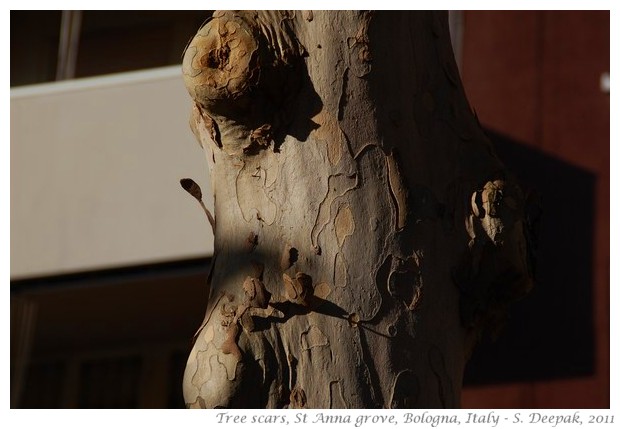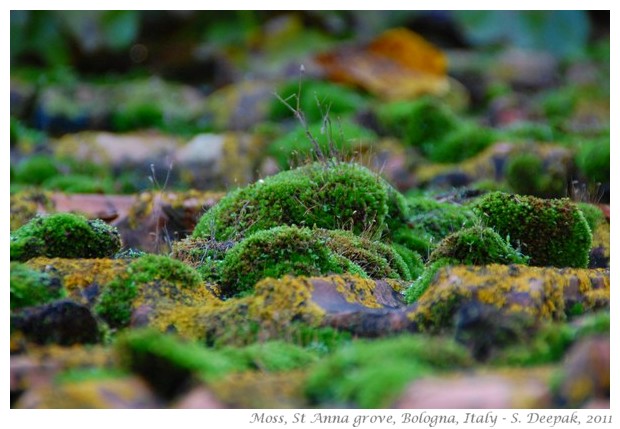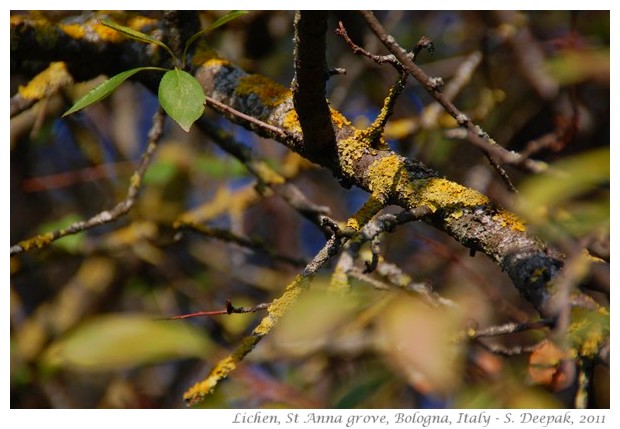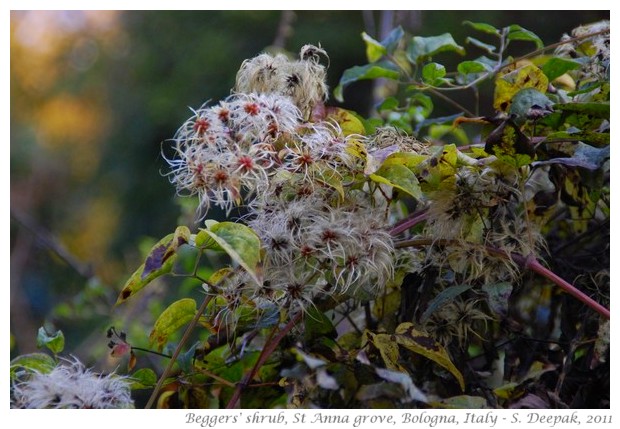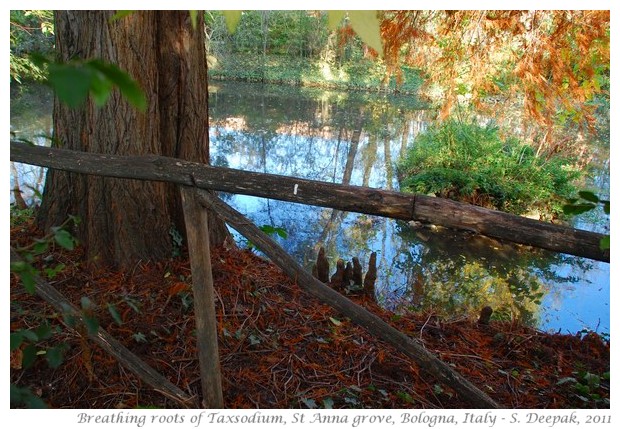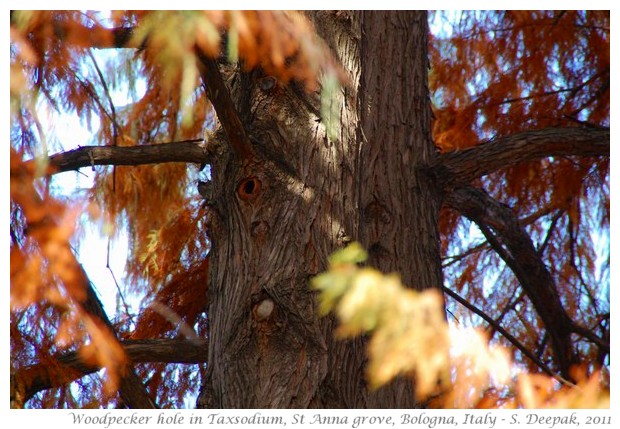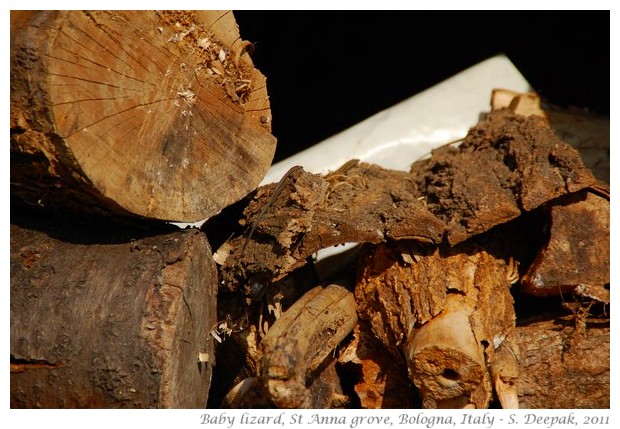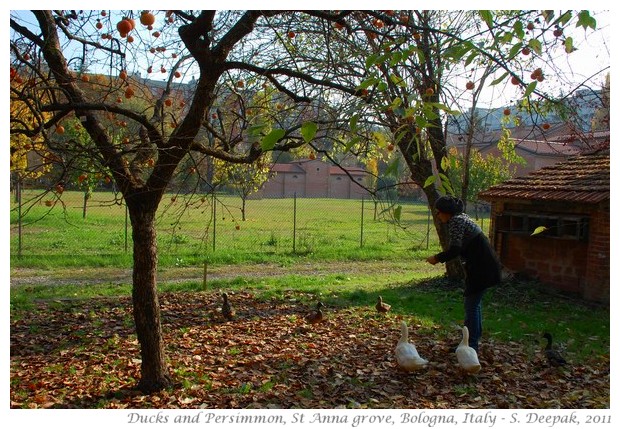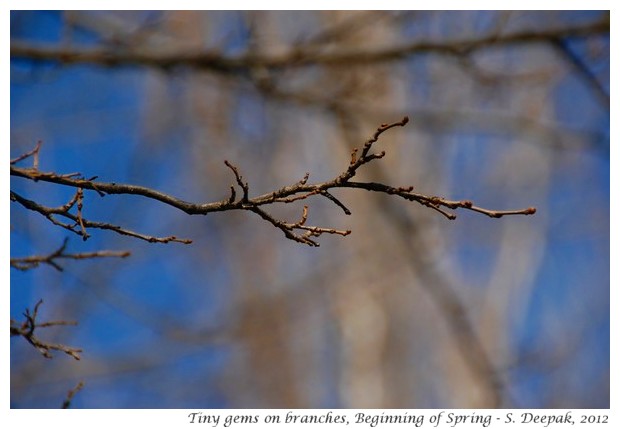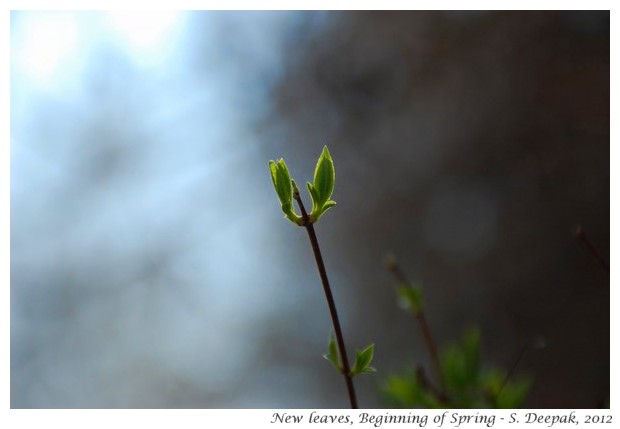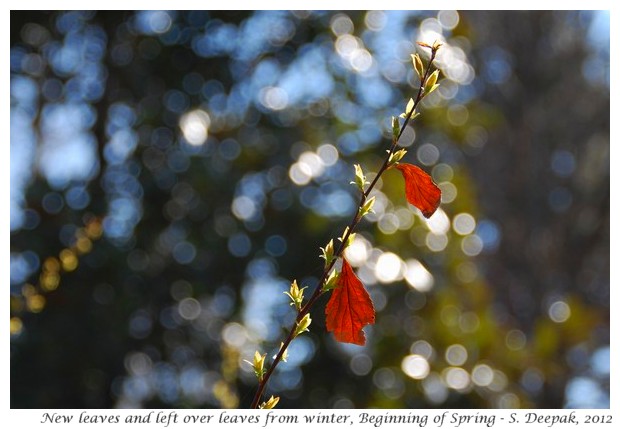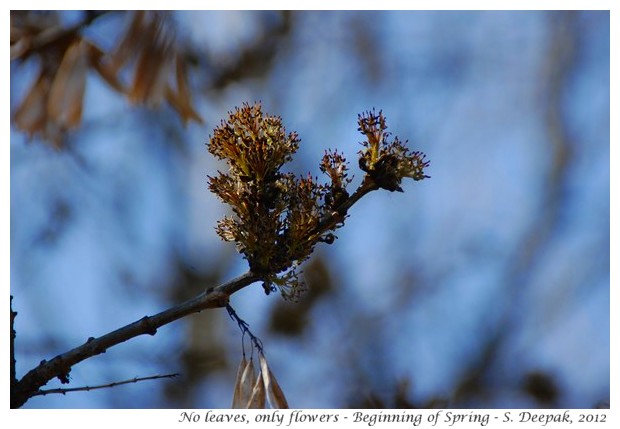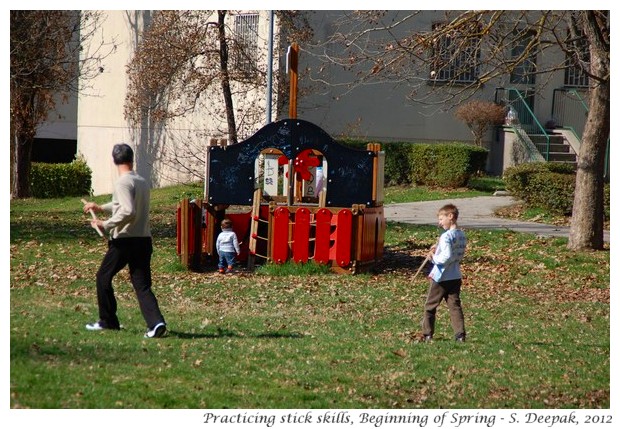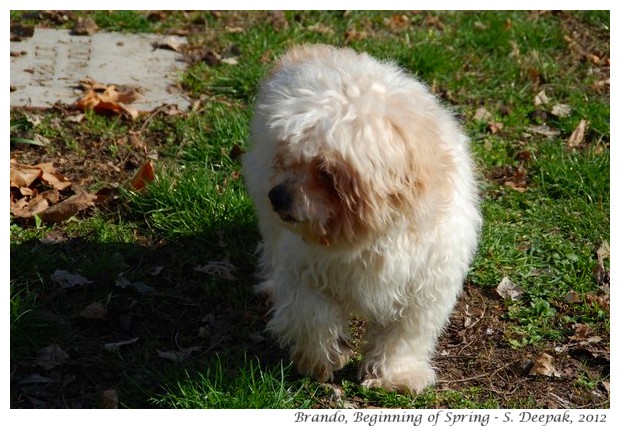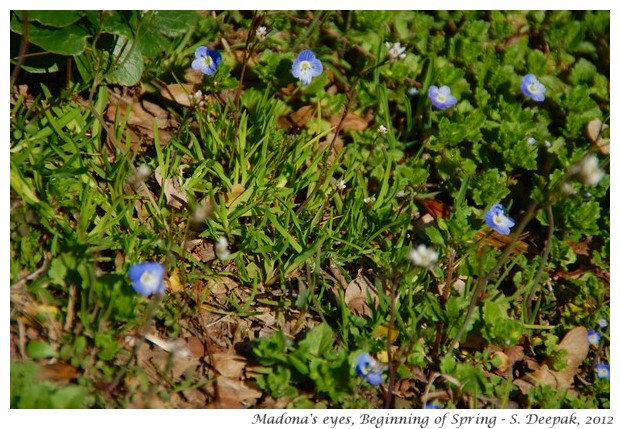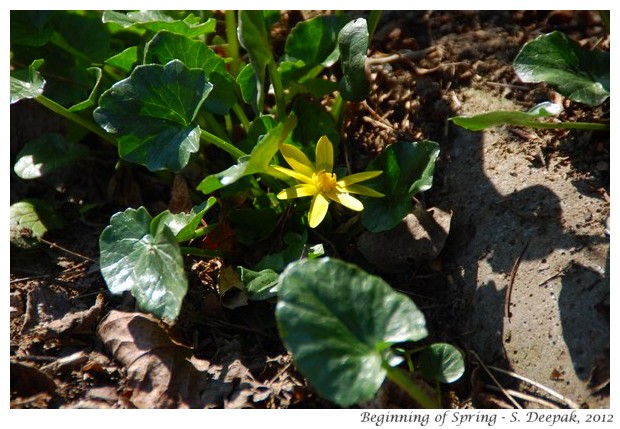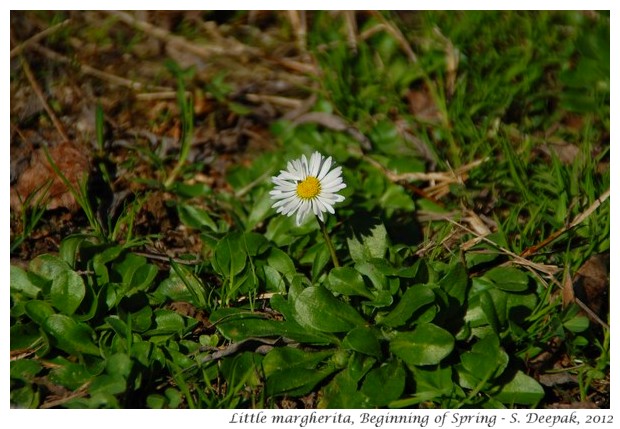Indian Ideas About Nature
Let me start briefly with some of my ideas about nature, which are influenced by my growing up in India. Hinduism is full of Gods and Goddesses, each of whom is linked with an animal and a plant species. There are many mythological stories that teach one to respect all the beings as a part of the respect for the sacred.
There are different stories linked with plants in the Hindu mythology. Like the story of the sacred Tulsi plant (Indian Basil), which represents a pious prostitute. Thus, people believe that this plant should not be kept inside the house, but must be planted in the courtyard where the families can pray to it at dawn and sunset by lighting a lamp near it. The 1960's Hindi film Parakh had one of my all time favourite songs, Mere Man ke diye (The lamp of my heart), in which Sadhana lights a lamp and prays to Tulsi plant. According to Ayurveda, Tulsi is an important medicinal plant. Such myths and sacred stories, are ways to remind the communities about the importance of different species of plants and animals, and to safeguard the biodiversity.
I remember my grand-mother once telling me to not to pluck the leaves of a plant at night because "the plant was sleeping". I think that such a way of thinking illustrates the popular understandings of life in the plants among Indians. While in the cities, people have a more transactional ideas about nature (for example, that it is good for breathing and well-being, it is relaxing and stress-busting), in the smaller towns and villages of India, I feel that there is still a lot of respect and traditional knowledge about these ancient understandings of nature.
An exhibition of Bonsai plants was held at the beautiful 19th century Jaquard garden in the centre of Schio. It is a small garden but is very beautiful, with an old theatre and a green-house. The exhibition presented the plants grown by the Bonsai students of Schio under their teacher Dr. Ennio Santacatterina.
I spoke to Ennio to understand about Bonsai. He explained that he had discovered his passion for Bonsai after his retirement. His school is a part of the Bonsai Art School and its classes are held in a local plant shop called Garden Schio.
There are different stories linked with plants in the Hindu mythology. Like the story of the sacred Tulsi plant (Indian Basil), which represents a pious prostitute. Thus, people believe that this plant should not be kept inside the house, but must be planted in the courtyard where the families can pray to it at dawn and sunset by lighting a lamp near it. The 1960's Hindi film Parakh had one of my all time favourite songs, Mere Man ke diye (The lamp of my heart), in which Sadhana lights a lamp and prays to Tulsi plant. According to Ayurveda, Tulsi is an important medicinal plant. Such myths and sacred stories, are ways to remind the communities about the importance of different species of plants and animals, and to safeguard the biodiversity.
I remember my grand-mother once telling me to not to pluck the leaves of a plant at night because "the plant was sleeping". I think that such a way of thinking illustrates the popular understandings of life in the plants among Indians. While in the cities, people have a more transactional ideas about nature (for example, that it is good for breathing and well-being, it is relaxing and stress-busting), in the smaller towns and villages of India, I feel that there is still a lot of respect and traditional knowledge about these ancient understandings of nature.
Bonsai Plants
Literally the term Bonsai means "planted in a vase". The aim of growing a Bonsai is to create a realistic representation of nature through a miniature tree.An exhibition of Bonsai plants was held at the beautiful 19th century Jaquard garden in the centre of Schio. It is a small garden but is very beautiful, with an old theatre and a green-house. The exhibition presented the plants grown by the Bonsai students of Schio under their teacher Dr. Ennio Santacatterina.
I spoke to Ennio to understand about Bonsai. He explained that he had discovered his passion for Bonsai after his retirement. His school is a part of the Bonsai Art School and its classes are held in a local plant shop called Garden Schio.
Ennio sees Bonsai as a part of the Zen traditions from Japan, in which it is fundamental to understand kamae, the basic and essential nature and characteristics of each plant. He cites the Bonsai guru Aba Kurakichi and says, "We must conserve all the specificities of the nature of each plant because Bonsai is a life-art." This means that each plant will develop according to its own characteristics and the Bonsai-maker must know how to enhance its individuality and highlight its beauty by selecting the appropriate style, branches and spaces.
I think that it means that a Bonsai is not created but rather it is nurtured, grown and gently guided. It is an exercise in mindfulness, in which the Bonsai-maker searches for a connection with the plant through silence and meditation, to understand its nature and develops a vision of how it should grow. Then, with patience and mindfulness, the maker helps the plant to achieve that vision.
Free-Growing Nature
While Bonsai speaks the language of Zen, meditation and mindfulness for creating a connection with plants, it seems as if the plant is moulded into an idealised vision of how it should look. It reminded me of another encounter about plants - in 2011, I had an opportunity to meet Mr. Marco Colombari, a gardener and plant-lover from Bologna, who had some very radical ideas about the plants.Marco had guided us in the discovery of a forest, talking to us about how to observe and "see" the plants. A century ago, this forest was an "aviculture centre", an area for developing and growing different species of birds. Then it had become a hunting laboratory and a honeybee cultivation centre. In the 1980s, surrounded by multi-story apartment buildings, this area was supposed to be used for building more condominiums. However, the local residents had started a campaign to save it as a natural area. It is now managed by an association called Oasi dei Saperi (The Knowledge Oasis), which promotes it as a site for the conservation of biodiversity. It is known as the Forest of St. Anna and is located in the Corticella area of Bologna.
Marco's point was that every plant is a living being and has its own characteristics. He felt that people decide about planting trees and plants without really thinking about those natural characteristics. Thus, every time we cut the branches of a tree for making it fit into our urban landscaping, it is like closing an animal or a bird inside a cage. In the forest, he had shown us parts of the trees where the branches had been cut, making us look at the seeping liquids from the cut surfaces and drawing parallels with injured animals.
Besides the natural forest, St. Anna Forest also has some other areas including a botanical garden for growing medicinal herbs, a small pond which was used in the past for jute production and a group of ash trees with old artificial nests which were used for keeping birds when it was an aviculture centre.
How do I reconcile this understanding with our daily business of living? There is a proverb in Hindi which says "If the horse becomes the friend of the grass, what would it eat?" I think that this proverb sums up the basic dilemma of our life - the impossibility of avoiding violence, if we wish to live.
Thus, I think that all life in the world is inter-connected and there is no way we can avoid eating other life forms, till the time comes for us to die when we return back to the earth, turn into our basic elements and become a part of the never-ending cycle of life, death and decay. To me it means respecting nature and all forms of life, which I translate as avoiding giving unnecessary suffering to my fellow creatures. Thus, I feel that individuals can decide if they wish to eat meat or they prefer to be vegetarian or vegan - it is a matter of choice linked with personal convictions.
However, I think that keeping animals to be used for their meat (chicken, ducks, sheep and cows) in narrow spaces, which do not allow them to move, and making them eat food laced with hormones and antibiotics so that they can fatten quickly, or hurting them unnecessarily, are wrong.
It means being kind to the animals and birds that we keep as pets. It means, taking care of the nature so that our biodiversity is maintained and strengthened. It means that if we have a zoo or a circus, we shall ensure dignified spaces for keeping the animals and treat them with care. I think that zoos and wild-life parks can play an important role in saving species close to extinction and in teaching young people about the importance of safeguarding nature and biodiversity.
Some people would completely separate humans from other animals because they see all human-animal interactions as basically evil and unwelcome for the animals. They are against keeping pet animals, they don't like zoos, they do not want any experiments involving animals - I feel that it is an extreme view and does not help the animals or the nature.
I hope that science and technology would soon progress so that one day we can have all kinds of food, including meat and fish, grown in cell-cultures. In the meantime, I would like more humane conditions for the animals we keep for meat.
The evolution has made different life-forms co-dependent on each other. We have biomes inside each of us, made of billions of bacteria and viruses - every time we are ill and take medicines, we are killing millions of them. Life, death and decay are a part of a never-ending cycle going around us all the time and there is no way we can say that we don't want to be a part of this cycle.
Some Reflections
Listening to Marco had a very strong impact on me. Reflecting on his words and coupled with the philosophy in the Indian sacred books of Upanishads, I feel that it is the same life-force flowing inside the trees and plants which flows in every living being.How do I reconcile this understanding with our daily business of living? There is a proverb in Hindi which says "If the horse becomes the friend of the grass, what would it eat?" I think that this proverb sums up the basic dilemma of our life - the impossibility of avoiding violence, if we wish to live.
Thus, I think that all life in the world is inter-connected and there is no way we can avoid eating other life forms, till the time comes for us to die when we return back to the earth, turn into our basic elements and become a part of the never-ending cycle of life, death and decay. To me it means respecting nature and all forms of life, which I translate as avoiding giving unnecessary suffering to my fellow creatures. Thus, I feel that individuals can decide if they wish to eat meat or they prefer to be vegetarian or vegan - it is a matter of choice linked with personal convictions.
However, I think that keeping animals to be used for their meat (chicken, ducks, sheep and cows) in narrow spaces, which do not allow them to move, and making them eat food laced with hormones and antibiotics so that they can fatten quickly, or hurting them unnecessarily, are wrong.
It means being kind to the animals and birds that we keep as pets. It means, taking care of the nature so that our biodiversity is maintained and strengthened. It means that if we have a zoo or a circus, we shall ensure dignified spaces for keeping the animals and treat them with care. I think that zoos and wild-life parks can play an important role in saving species close to extinction and in teaching young people about the importance of safeguarding nature and biodiversity.
Some people would completely separate humans from other animals because they see all human-animal interactions as basically evil and unwelcome for the animals. They are against keeping pet animals, they don't like zoos, they do not want any experiments involving animals - I feel that it is an extreme view and does not help the animals or the nature.
I hope that science and technology would soon progress so that one day we can have all kinds of food, including meat and fish, grown in cell-cultures. In the meantime, I would like more humane conditions for the animals we keep for meat.
Conclusions
Coming back to the plants, does making the plants grow as miniaturised Bonsai trees means that the plants are being forced into unnecessary suffering? Probably Marco Colombari would say yes. I don't think so. I feel that Bonsai practice, by helping us to seek a connection with the plants through mindfulness and meditation, is another path to recognising the importance of nature.The evolution has made different life-forms co-dependent on each other. We have biomes inside each of us, made of billions of bacteria and viruses - every time we are ill and take medicines, we are killing millions of them. Life, death and decay are a part of a never-ending cycle going around us all the time and there is no way we can say that we don't want to be a part of this cycle.
This reflection about the life in the plants, makes me think of Shiva, the Hindu God who controls the never-ending cycles of creation and destruction in the universe. I think that Shiva is a metaphor of the life and death which connects together all the organic and inorganic matter of the universe. It is the life-force moving the particles composing the atoms, which combine to make the molecules of different elements, the building-bricks of everything in the universe. Life and death are illusions, because those atoms and the forces moving their particles, they do not die and will continue to combine and create new forms all the time.
***




